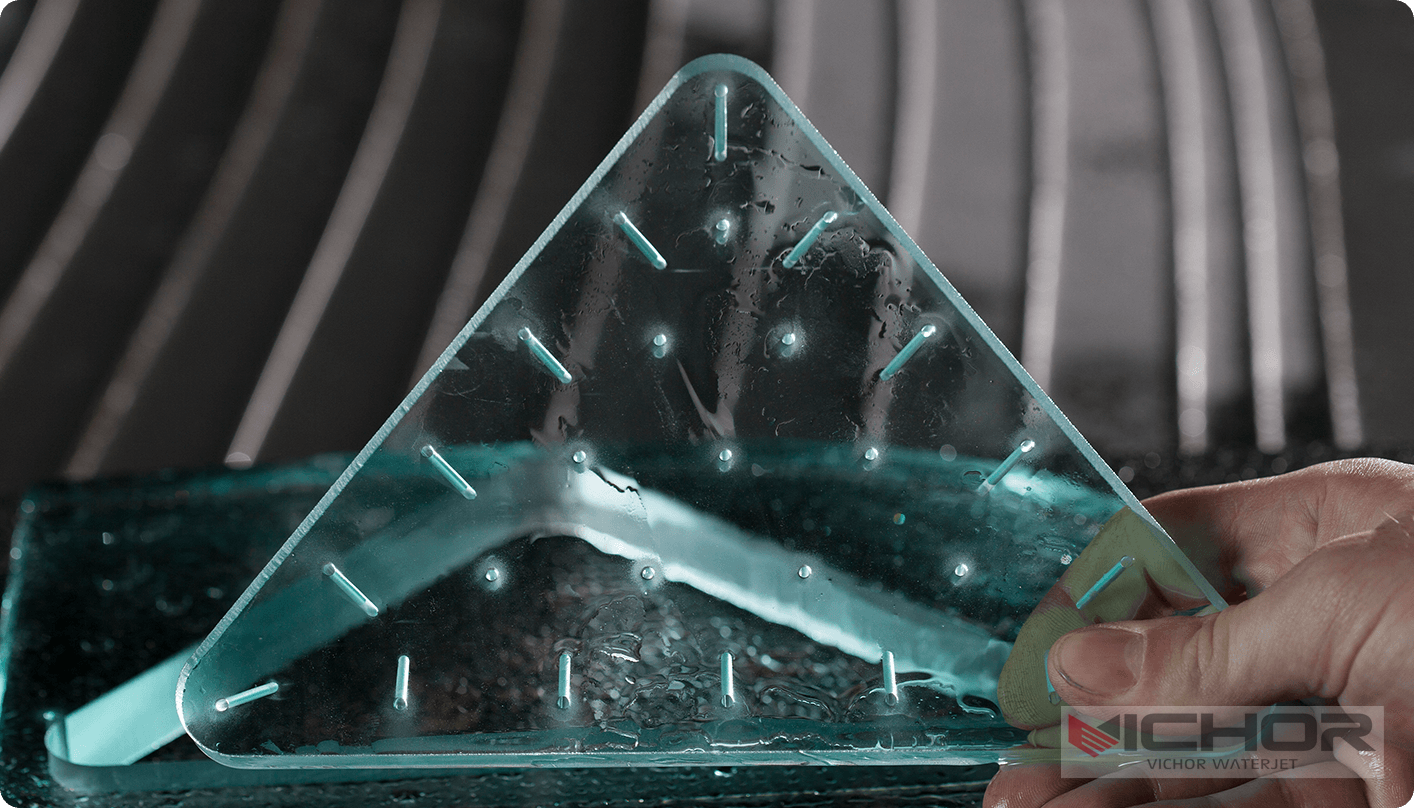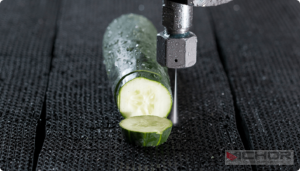
Portable Water Jet Cutter Price: The Ultimate Buyer's Guide (2025)
Are you considering investing in a portable waterjet cutter but feel overwhelmed by the cost? You’re not alone. The portable water jet cutter price is the single most significant factor for most buyers, from small machine shops to large field service teams. However, understanding what drives this cost is key to making a smart investment. The price isn’t just a number; it’s a reflection of capability, quality, and long-term value. This comprehensive guide will demystify the portable water jet cutter price, breaking down the factors that influence it, the hidden costs to consider, and how to ensure you get the best return on your investment. We’ll explore everything from entry-level options to high-end systems, empowering you to make an informed decision that aligns with your budget and cutting needs.
What is a Portable Waterjet Cutter? Defining the Technology
Before diving into the portable water jet cutter price, it’s crucial to understand what you’re investing in. Unlike their massive, fixed-bed industrial counterparts, portable waterjet cutters are designed for mobility and flexibility. They are typically compact, often on wheels, and can be transported to a job site, moved around a large facility, or positioned for cutting large, unwieldy materials that can’t be easily moved.
These systems use the same fundamental principle: propelling a super-high-pressure stream of water (often mixed with an abrasive material like garnet) to cut through virtually any material. The key differentiator is their design philosophy—prioritizing portability without (ideally) sacrificing too much power or precision. The portable water jet cutter price is directly tied to how successfully a manufacturer balances this portability-performance equation. Systems range from lightweight, low-pressure pumps for softer materials to robust, high-pressure units that rival the power of some stationary models.
Key Factors Influencing Portable Water Jet Cutter Price
The portable water jet cutter price is not arbitrary. It is a sum of its parts and capabilities. Understanding these factors will help you decipher why one system costs $50,000 and another exceeds $200,000.
Pump Type and Pressure (PSI): This is the heart of the system and the biggest determinant of cost. There are two main types:
Direct-Drive Pumps: These are typically less expensive, both upfront and in maintenance. They are well-suited for light-duty and intermediate applications but often top out at lower pressures (around 40,000 – 60,000 PSI). A system with a direct-drive pump will generally have a lower portable water jet cutter price.
Intensifier Pumps: These generate much higher pressure (up to 90,000+ PSI), enabling faster cutting speeds, thicker material capacity, and higher precision on hard materials. They are more complex, use more parts, and are significantly more expensive. A high-PSI intensifier pump will command a premium portable water jet cutter price.
Cutting Table and Guidance System: Portability often means sacrificing a large, fixed table. The cost then shifts to the guidance system. Simple manual setups (like a articulated arm) are cheaper. Advanced systems with CNC-controlled tracks or gantries that ensure robotic precision are far more expensive. The complexity and size of the guidance system are a major component of the final portable water jet cutter price.
Software and Control System: The brain of the operation. Basic software that requires manual G-code input is less costly. Integrated, user-friendly software with a graphical interface, CAD/CAM compatibility, pre-set material libraries, and intuitive controls adds significant value—and cost—to the package. This software is a critical, though often hidden, part of the portable water jet cutter price.
Build Quality and Components: The quality of the high-pressure plumbing, valves, seals, and structural frame dictates longevity and reliability. A machine built with commercial-grade components will have a higher initial portable water jet cutter price but will suffer from less downtime and lower long-term operating costs. Cheaper machines may use less robust components to hit a lower price point.
Abrasive Delivery System: Integrated, automated abrasive feed systems that ensure consistent mixing and cut quality are more expensive than simple, manual hoppers. This feature directly impacts the consistency of your cut and is a factor in the machine’s overall portable water jet cutter price.
Breaking Down the Portable Water Jet Cutter Price Range
Given the factors above, the market offers a wide spectrum of prices. It’s helpful to think in tiers, as the portable water jet cutter price is a direct function of capability.
Entry-Level / Low-Pressure Systems ($20,000 – $60,000): This range typically includes direct-drive pumps with lower pressure outputs. They are ideal for cutting softer materials like rubber, foam, insulation, gaskets, plastics, and thin composites. They are truly portable but have clear limitations on material thickness and type. The portable water jet cutter price here is attractive for businesses needing a niche tool.
Mid-Range Systems ($60,000 – $120,000): This is the most competitive and popular segment. It often includes smaller intensifier pumps or advanced direct-drive pumps, offering pressures up to 60,000-80,000 PSI. These systems can handle a much wider range of materials, including metals like steel, aluminum, and titanium, albeit at slower speeds for thicker plates. They often feature better software and more robust construction. This portable water jet cutter price point offers a strong balance of performance and affordability.
High-End / Industrial Portable Systems ($120,000 – $300,000+): At this portable water jet cutter price, you are investing in near-stationary performance in a mobile package. These systems feature high-power intensifier pumps (90,000+ PSI), sophisticated CNC guidance systems (like cross-rollers or heavy-duty tracks), advanced software suites, and premium components. They are designed for heavy, daily use in demanding environments like shipyards, construction sites, and aerospace facilities, cutting thick metal and complex parts with high precision.
Beyond the Sticker: Hidden Costs of Ownership
The initial portable water jet cutter price is just the beginning. To understand the true cost of ownership, you must factor in operational and maintenance expenses.
Abrasive Material: Garnet sand is the primary consumable. Depending on your usage, abrasive costs can range from a few thousand to tens of thousands of dollars annually, easily surpassing the cost of electricity and water.
Maintenance and Wear Parts: High-pressure water is incredibly destructive. Seals, orificies (gem nozzles), and mixing tubes are wear items that require regular replacement. The cost and frequency depend on usage hours and water quality.
Power Requirements: These machines require a significant amount of power (typically 3-phase). Ensuring your facility or a remote site has the necessary electrical hookups may involve upgrade costs.
Water Filtration: Using unfiltered tap water can rapidly destroy expensive pump components. A water purification or filtration system is a highly recommended, if not mandatory, investment to protect your machine.
Training and Installation: While portable, these are complex systems. Factor in the potential cost of operator training and initial setup by a technician.
Is a Portable Waterjet Cutter Worth the Investment? Calculating ROI
Justifying the portable water jet cutter price means calculating your Return on Investment (ROI). The value isn’t just in cutting; it’s in unlocking new business opportunities and saving money elsewhere.
Eliminating Subcontracting: How much do you currently spend outsourcing cutting work? Bringing this capability in-house often pays for the machine itself within a year or two.
On-Site Cutting Capability: For fabricators and service teams, the ability to cut on-site for clients (e.g., in a shipyard, construction site, or factory floor) eliminates the logistics and cost of transporting large, heavy materials. This unique value proposition can be a powerful selling point.
Material Savings: Waterjets have a very narrow kerf (cut width) and can be nested extremely efficiently, minimizing material waste compared to other methods like plasma or laser, especially on expensive metals.
Versatility: One machine can cut almost anything. This eliminates the need for multiple dedicated saws or cutters for different materials, saving space and capital.
How to Get the Best Value for Your Portable Water Jet Cutter Price
Navigating the market requires a strategy to ensure you get a machine that meets your needs without overpaying.
Define Your Needs Precisely: What materials will you cut? What are the maximum thicknesses? What level of precision and cut quality is required? What is your expected daily usage? Answering these will prevent you from buying an under-powered machine or overpaying for capabilities you’ll never use.
Get Demos and Sample Cuts: Any reputable manufacturer or dealer will provide a demonstration and cut your sample material. This is the best way to verify a machine’s capabilities and the final cut quality.
Consider the Total Package: Look beyond the pump. Evaluate the quality of the guidance system, the user-friendliness of the software, and the robustness of the frame and components.
Scrutinize the Service and Support Agreement: A portable machine may see rougher use. A strong warranty and a responsive, knowledgeable technical support team are invaluable. The cost of downtime can quickly eclipse savings from a cheaper machine.
Explore Financing Options: Many dealers offer leasing or financing plans that can help manage the cash flow impact of the portable water jet cutter price, making it easier to acquire the right machine for your business today.
The portable water jet cutter price is a significant investment, but it is one that can fundamentally transform a business’s capabilities and profitability. By moving beyond the initial sticker shock and understanding the factors that drive cost—from pump technology and software to hidden operational expenses—you can move from a position of uncertainty to one of confidence. There is no one-size-fits-all answer; the “right” portable water jet cutter price is the one that aligns perfectly with your specific application, material requirements, and business goals. By carefully assessing your needs, thoroughly researching the market, and calculating the true long-term ROI, you can make a purchase that isn’t just an expense, but a powerful engine for future growth.
continue reading
Related Posts
- 1461 words7.4 min read


